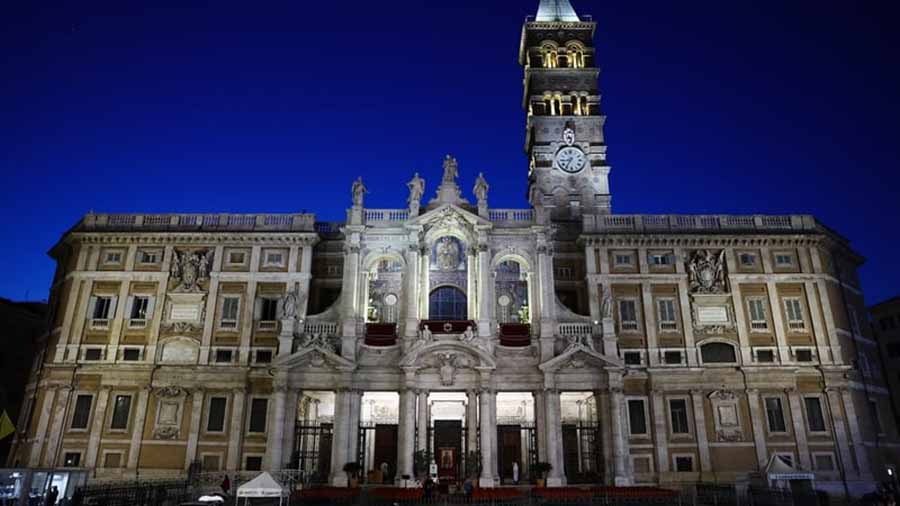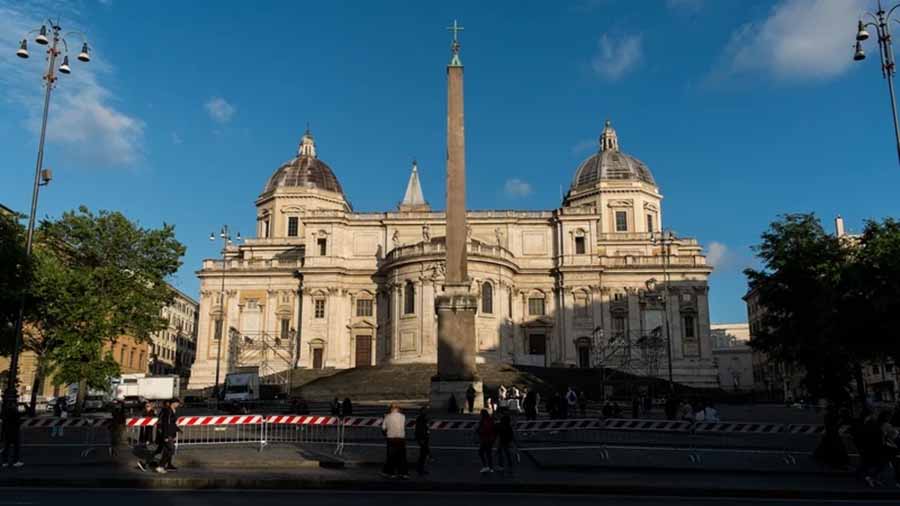
The Santa Maria Maggiore basilica serves as the final resting place of Pope Francis, who died on Easter Monday at 88 years old.
Pope Francis chose this fifth-century church due to his devotion to the Virgin Mary and his practice of praying there before and after trips abroad.
The church houses the tombs of seven popes, with the last being Clement IX in 1669.
Notably, Francis becomes the first pope in over a century not to be buried in St Peter’s Basilica, unlike his predecessors.
The basilica features exquisite mosaics, 40 Ionic columns along its central nave, and is home to important relics attributed to early Christianity, including a piece of wood believed to have been from Jesus’s crib.
The basilica’s website says recent studies have dated the wood from the period of Jesus’s birth.

For those who have visited, there is an electric charge of amazing memories from this ancient basilica, the golden light filtering through the nave, illuminating ancient mosaics, the quiet reverence at the Holy Crib relic, especially during Advent, the occasional organ music or choral performances enhancing the sparkling scintillation of spirituality.
Founded in the fifth century, the Santa Maria Maggiore basilica is one of Rome’s oldest churches, built after a miraculous snowfall (legend of the Virgin Mary). Its structure blends Roman, Early Christian, and Baroque elements.
A grand facade with a 14th-century bell tower (Rome’s tallest) and a mix of Romanesque and Baroque styles. The piazza features an ancient obelisk.
A vast nave with 5th-century mosaics depicting Old Testament scenes, a coffered gold ceiling (reputedly gilded with gold from the Americas), and the Sistine and Pauline Chapels, adorned with intricate frescoes and sculptures.
Stunning fifth-century mosaics in the triumphal arch and apse, showcasing early Christian art with vibrant biblical scenes.
Relics: The basilica houses a venerated relic of the Holy Crib (manger of Jesus) beneath the high altar, a major draw for pilgrims. The resting place of Gian Lorenzo Bernini, the famed Baroque artist, is marked by a simple plaque.
A revered fifth-century icon of the Virgin Mary, believed to be miraculous, is housed in the Borghese Chapel. As a papal basilica, it hosts important liturgical events, especially during the Christmas season and the Feast of the Assumption (August 15), with a reenactment of the snowfall using white petals.
Expect a serene yet awe-inspiring ambiance, with pilgrims, tourists, and worshippers mingling. The basilica is active, with frequent Masses. Museums and Loggia: A small museum displays artifacts like vestments and relics. The loggia offers a view of rare 13th-century mosaics and the piazza.
It is centrally located near Termini Station, easily accessible by metro (Termini or Cavour stops). Typically open 7:00 AM–6:45 PM, but check for Mass or event closures.
Access is free to the main basilica; modest dress code enforced (cover shoulders and knees). The museum and loggia may have a small fee. The basilica is popular but less crowded than St. Peter’s, though peak seasons (summer, Christmas) can be busy.

The eighth Pope to be buried in Maggiore
Seven previous Popes are buried in Santa Maria Maggiore Basilica in Rome: Honorius III (reigned 1216–1227), Nicholas IV (reigned 1288–1292), St. Pius V (reigned 1566–1572), Sixtus V (reigned 1585–1590), Clement VIII (reigned 1592–1605), Paul V (reigned 1605–1621), and Clement IX (reigned 1667–1669).



